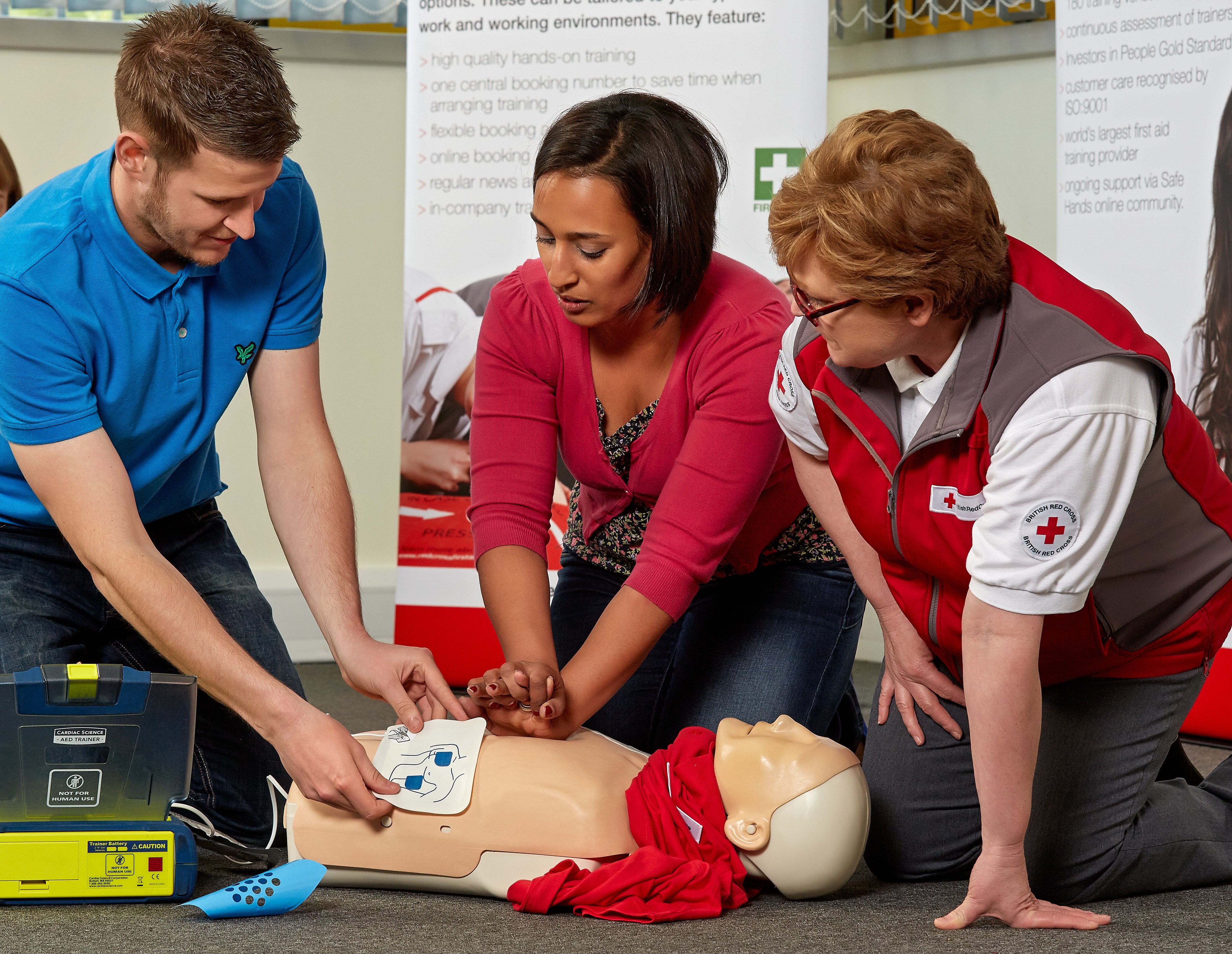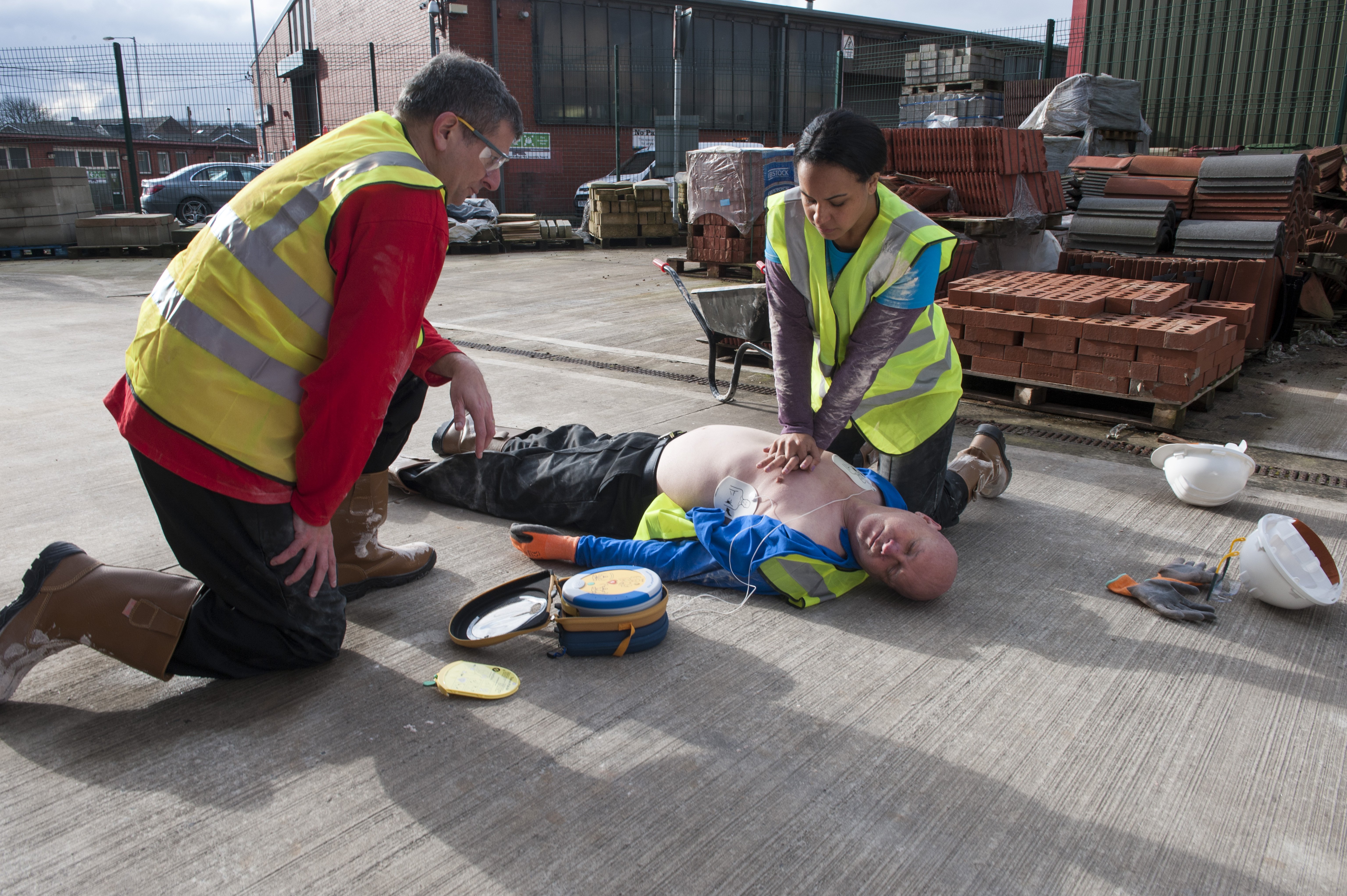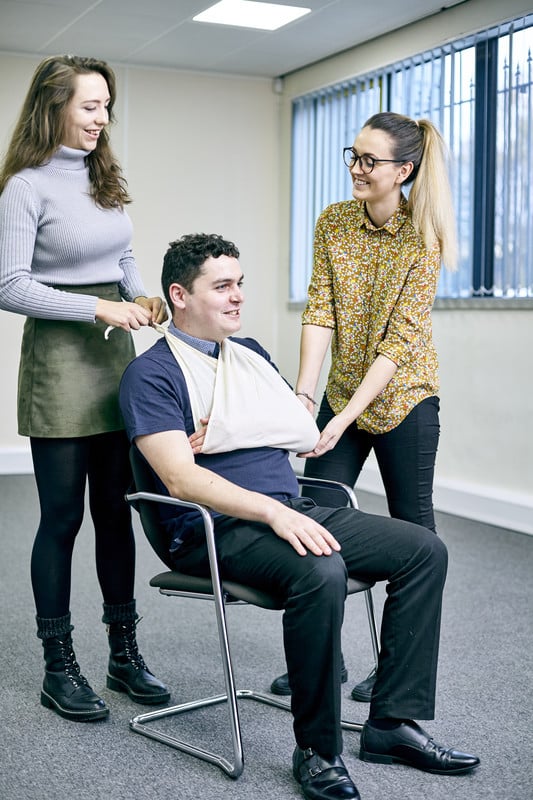First aiders responding quickly to an emergency could just make the difference for one of your colleagues. This blog highlights the importance of investing in quality first aid training in CPR and AEDs (automated external defibrillators) for your employees, to make sure confident first aiders are always on hand.
Why confident first aiders are essential
First aid training gives your employees the confidence and skills to act in an emergency. Training in first aid means learning to remain calm, understanding the severity of a situation, and applying your skillset accordingly to best support the injury.
While first aid incidents in most workplaces might be as quick and easy to deal with as a paper cut or a nosebleed, more serious medical emergencies such as a heart attack or cardiac arrest may require lifesaving first aid skills.
Ensuring your organisation’s first aiders are confident – not only that they have the necessary skills to act, but that they have the self-assurance to support the casualty before emergency services arrive – is crucial. Having as many confident first aiders in your workplace as you can, keeps your workforce as safe as possible should an incident occur.

Difference between heart attack and cardiac arrest
People often get confused about the difference between a heart attack and a cardiac arrest. It’s vital that your first aiders can recognise the signs symptoms and act accordingly:
A cardiac arrest occurs when the heart stops working completely. The casualty will have collapsed and be unresponsive and not breathing. They need immediate first aid and urgent medical attention.
A heart attack is a blockage of blood to the heart – the person may have persistent, dull and heavy vice-like chest pain, which may spread to their arms, neck, jaw, back or stomach. A heart attack can lead to cardiac arrest so it's important to get emergency help as quickly as possible.
Who's at risk from a cardiac emergency?
The short answer is that any person could experience a cardiac emergency such as a cardiac arrest or heart attack.
There are a few factors which can increase a person’s likelihood of having heart problems and besides genetic factors, which we have no control over, many of these are related to wear and tear and the effects of our lifestyles. Of course, this means that as you get older, there’s an ever-increasing risk, and we do know there are a few things we can do to help keep the odds in our favour, such as maintaining a healthy weight, not smoking, and taking regular exercise.
Since our workplaces are populated with a wide range of individuals, it would be safe to say that at any point, someone at work could potentially experience a cardiac emergency, which is why it’s crucial to have adequate numbers of well-trained first aiders available to help, should the worst occur.
What is an AED and why use one?
An AED is a portable machine that can correct an abnormal heart rhythm by giving an electric shock. They are used in a first aid emergency to help people who are unresponsive and not breathing.
When someone suffers a cardiac arrest, the heart stops effectively pumping blood around the body to the vital organs. They will become unresponsive and stop breathing. While CPR (cardiopulmonary resuscitation) uses chest compressions to mimic the heart and keep the blood flowing, an AED uses an electric shock to enable the heart to start beating properly again.
Prompt CPR and defibrillation can more than double the chances of survival if someone has suffered a cardiac arrest. Research by the National Institute of Health and Care Research shows that providing a shock using a defibrillator to people with out-of-hospital cardiac arrest before the arrival of emergency medical services increases their chance of survival. Survival rates for casualties who had a rhythm that could be treated by a shock from the defibrillator was at 53% following intervention by bystanders, according to the report.
In most first aid situations, CPR and the AED work together to increase the chances of returning the heart to a normal rhythm.

Common AED Myths
These are some of the most common misconceptions around defibrillators and the difference between heart attacks and cardiac arrest:
You need to be trained to use an AED.
False! AEDs require no prior training to be used by the public. However, HSE regulations state that employees must be given appropriate training on any equipment available for them to use in the workplace.
AEDs are used to treat heart attacks.
False! A heart attack is a blockage of blood supply to the heart muscle, whereas a cardiac arrest occurs when the heart stops pumping blood effectively round the body. A cardiac arrest casualty will have collapsed and be unresponsive and not breathing.
You don't need to do CPR if an AED is available.
False! You should start doing CPR as soon as possible if the person is unresponsive and not breathing. If an AED is available, get someone else to bring the AED to the casualty. In most first aid situations, CPR and the AEDs work together to increase the chances of returning the heart to a normal rhythm.
Using an AED could make things worse.
False! AEDs will not let you administer a shock if the patient does not require one. Placing the pads on the patient’s torso lets the AED monitor the heart rate and decide whether a shock is necessary. A shock is only delivered if the heart is in a ‘shockable rhythm’.
You can’t use an AED on a child.
False! AEDs can be used on adults and children over one year old and are often found in public places such as parks and community centres.
What type of training is involved for CPR and AED?
All Red Cross Training first aid courses include training on how to use an AED in an emergency to help your first aiders have the confidence to act. Each of our Emergency First Aid at Work, First Aid at Work Requalification and First Aid at Work courses include practical training in CPR and AED use. Here’s what you’ll learn:
- How to help someone who is unresponsive and breathing
- How to use CPR to help someone who is unresponsive and not breathing
- How to use an AED to help someone who is unresponsive and not breathing
Learners are encouraged to observe and support one another, before incorporating the CPR and AED in a practice scenario in small groups. Our trainers use AED training devices so that the learners have the chance to replicate the operation of this vital piece of equipment as realistically as possible.
Topics: First Aid



